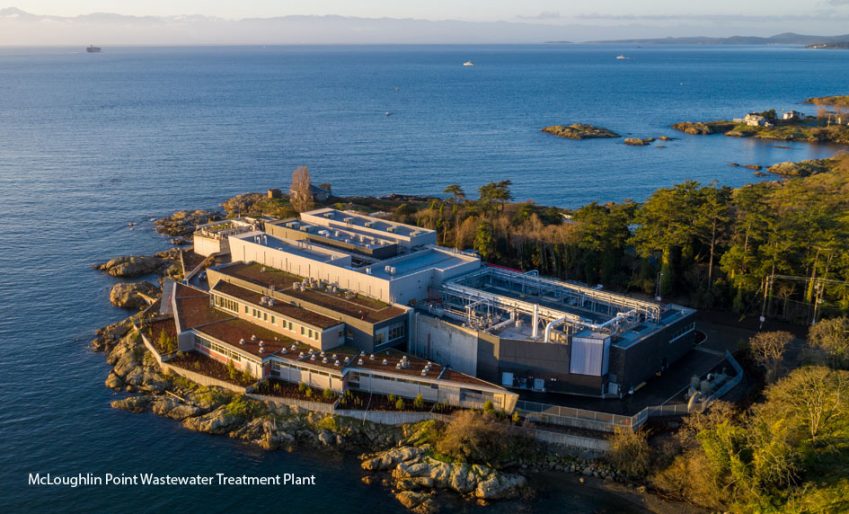The McLoughlin Point Wastewater Treatment Plant’s Operations and Maintenance (O&M) building in Victoria has achieved LEED Gold certification. The O&M building is just one component of the $775 million wastewater program undertaken by the Capital Regional District.
The wastewater treatment plant and associated O&M facility was built by Harbour Resource Partners, a consortium of Graham, AECOM and HDR. Graham and AECOM formed a design-build partnership leveraging Graham’s well-established construction capability and AECOM’s wastewater design expertise and environmental specialist abilities. HDR was the architecture design lead, providing full architectural services, including an initial iterative design and site selection process.
Promoting sustainability and energy efficiency was a critical consideration to the design planning, architecture, building engineering, and program construction management of the wastewater treatment program. The team examined CRD’s goals, project site context, and sustainability targets at the outset to deliver an integrated plan and building process.
“Wastewater treatment plant projects always present complex environmental construction challenges. The CRD project was an extreme example of this with the site being contaminated from its previous use and the location prominent on a rocky headland in Victoria’s outer harbour,” said Ian Dickinson, Graham’s executive vice president, water.
Situated at a critically important location in Victoria, the McLoughlin Point Wastewater Treatment Plant was designed to minimize visual impacts from the water with mature landscaping and an observation deck. Special features of the facility include an education and interpretive area to engage the community with the plant’s water cycle, local natural environment, and importance of stormwater management and a green roof that helps maintain onsite animal habitats and aids stormwater management.
In addition, the building’s relatively small footprint incorporates heat recovery from within the facility, with opportunity to extend these energy resources into the surrounding neighbourhood in the future. The facility also includes electric vehicle charging stations, low consumption plumbing and lighting fixtures, and enhanced energy monitoring. Advanced construction and commissioning techniques were also employed to reduce pollutions and waste as well as improve indoor air quality.









